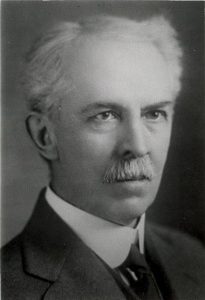
Photo info ...
Credit: Indiana University IndianapolisView Source
(May 28, 1860- July 26, 1922). Frank Barbour Wynn was born and reared on a farm near Brookville, Indiana, a setting that stimulated his interest in nature. Although he chose medicine as a career, he retained an intense interest in preserving areas of natural beauty and historic significance.
After receiving both an A.B. and a Master’s degree in chemistry from Indiana Asbury College (now DePauw University), Wynn graduated from the Medical College of Ohio in 1885. His medical training included two years of postgraduate education in Europe. He began his practice of medicine in downtown Indianapolis in the fall of 1893 and was appointed to the faculty of the Medical College of Indiana the next year, developing its pathology museum and a very extensive medical library (see ). He became the first city sanitarian in 1895.
Wynn was instrumental in unifying the state’s three principal proprietary medical schools into a state institution and was a guiding clinical influence, along with Dr. , in revising the medical curriculum and medical faculty during the formative years of the . Wynn’s annual teaching exhibits (1896-1899) for the were the origin of the annual scientific exhibit of the American Medical Association.
Wynn was appointed to the Indiana Centennial Commission in 1911 and, later, was a member and president of the Indiana Historical Commission. He was actively involved with the commission’s Park Committee, which inaugurated Indiana’s state park system, and worked in support of the establishment of national parks. Mt. Wynn in Glacier National Park recognizes his work in this area.

Help improve this entry
Contribute information, offer corrections, suggest images.
You can also recommend new entries related to this topic.